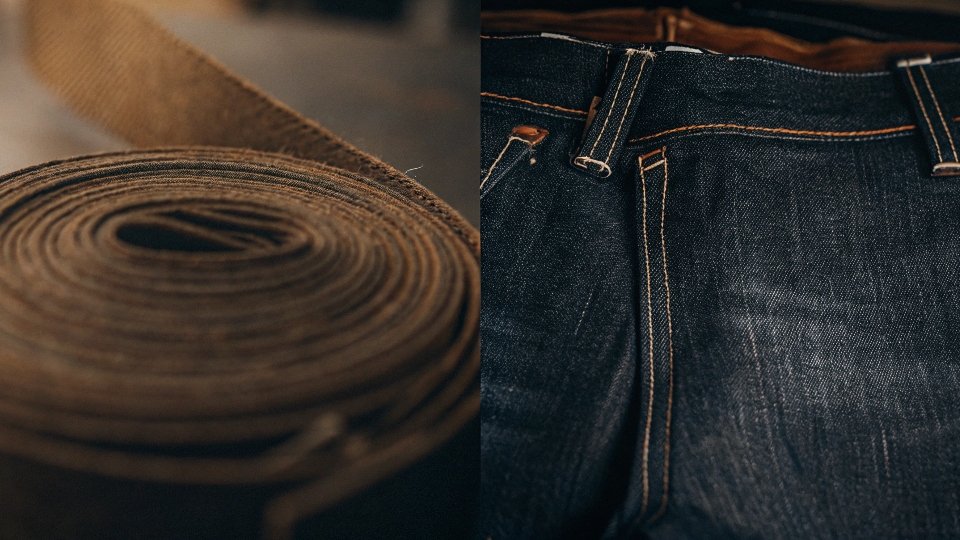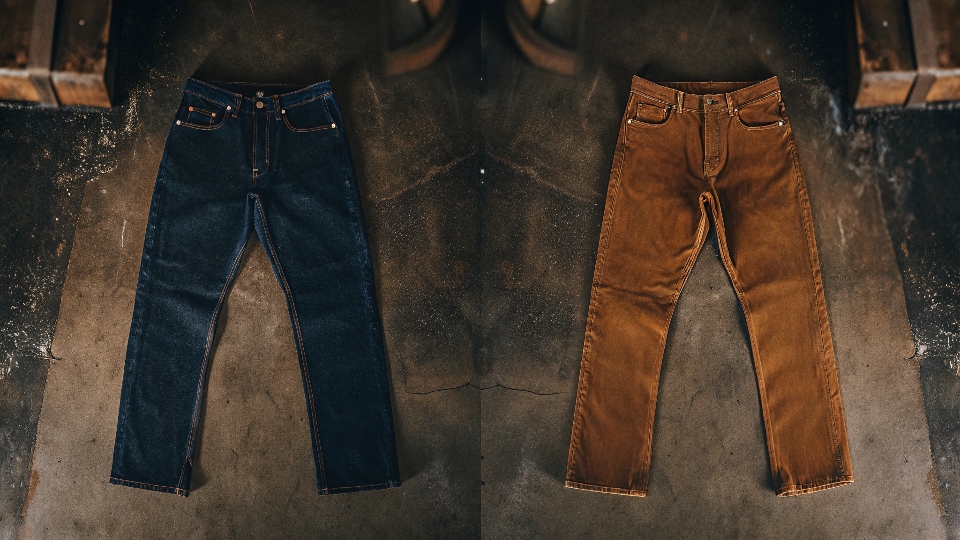People use the words denim, jeans, and Levi's all the time. But using them interchangeably causes confusion. This small mistake makes it hard to talk about the product you really want.
No, they are not the same. Denim is the fabric. Jeans are the pants made from that fabric. Levi's is the brand that first patented and popularized blue jeans, making them a household name.
This is one of the most fundamental concepts in my industry. When I discuss a new project with a designer like Dean, we have to be precise with our language. Denim is our raw material. Jeans are the finished product we create.
And Levi's? They are the pioneers who started it all. As the user insight correctly states, denim is the fabric, jeans are the garment, and Levi's was the first company to put them together in the way we know today. Let's break down this relationship so you can speak about it like a pro.
Are denim and jeans the same thing?
You touch a pair of jeans and think, "this is denim." Then you hear someone say "denim jeans" and it sounds repetitive. This can make you wonder if you are missing a key distinction.
No, denim and jeans are not the same. Denim is the name of the sturdy, cotton twill fabric. Jeans are the name for the style of pants, which are most famously made from denim.
Think of it like flour and bread. Denim1 is the raw ingredient; jeans are the finished product. In my factory, massive rolls of denim arrive on trucks. They are heavy and stiff. That is the fabric. Our skilled workers then take that fabric through a long process.
They lay it out on huge tables, cut it according to patterns, sew the pieces together, and then send it to our washing department. I oversee the washing process, where we might distress, soften, or change the color of the garment.
Only when that entire process is finished do we have a pair of jeans. One is the material, the other is the creation. You can buy denim by the yard, but you buy jeans by the pair.
| Term | Category | Description | Example |
|---|---|---|---|
| Denim | Material / Fabric | A sturdy cotton twill fabric with a distinct diagonal weave. | A roll of indigo-dyed cloth. |
| Jeans2 | Garment / Product | A style of pants, typically with five pockets and rivets. | The finished pair of pants you wear. |
Is it right to say "denim jeans"?
You describe your outfit as "denim jeans" and wonder if you just said "pants pants." The phrase feels redundant, but you also hear it used by people who seem to know fashion.
Yes, it is perfectly right and often useful to say "denim jeans." While most jeans are made of denim, the word "jeans" now describes a style of pants. Specifying "denim jeans" clarifies the material.
Over the last century, the word "jeans" has evolved. It started by referring specifically to blue denim trousers. But the style—the five-pocket design, the rivets, the specific stitching—became so iconic that other fabrics adopted it.
Today, you can walk into a store and find corduroy jeans, canvas jeans, or even twill jeans. They have the cut and pocket configuration of jeans, but they are not made from denim.
So, saying "denim jeans" is a way to be precise. In my line of work, that precision is everything. When a designer sends a technical package3, they specify the material. If they just wrote "jeans," we would have to ask, "what material?" If they write "12oz indigo denim jeans," we know exactly what to produce.
It's a way of distinguishing the genuine article from other pants that are simply borrowing the classic jeans silhouette. It’s not redundant; it’s specific.
Are denim and Levi's the same?
Your grandpa might call all blue jeans "Levi's." This common habit makes you wonder if the brand and the product are one and the same, like Kleenex and tissues.
No. Levi's is the brand name of the company that first patented and mass-produced riveted blue jeans. Denim is the fabric they used. Levi's is a company; denim is a material available to anyone.
This is a classic case of a brand name becoming so famous that it becomes a generic term for the product itself. It happened with Xerox for copiers, Band-Aid for adhesive bandages, and Kleenex for tissues.
Levi Strauss & Co. was the first and became the most dominant, so for generations, their name meant "jeans." As my user insight points out, they remain the most popular jeans brand in the world. Their Levi's 5014 model is arguably the most famous piece of clothing ever designed. It’s an icon of comfort and classic style.
However, Levi's is just one of thousands of brands that now make jeans. At DiZNEW, we manufacture jeans for many different brands, all of them using denim fabric5 that we source from mills around the world. Levi's does not own denim.
They were just the first to use it in a brilliant and revolutionary way. So, all Levi's are jeans, but not all jeans are Levi's.
Why are Levi denims called jeans?
We know denim comes from "de Nîmes" in France. But why were the pants Levi's made called "jeans"? It seems like an arbitrary name, but it has its own separate and fascinating history.
The term "jeans" comes from "Gênes," the French name for Genoa, Italy. Sailors from Genoa wore durable trousers made from a cotton-linen blend. The name for these trousers became associated with the pants, not just the sailors.
The history of your favorite pants is a European story with an American ending. The two key names come from two different cities.
- The Fabric: "Denim" comes from Nîmes, France. The sturdy blue fabric made there was called "serge de Nîmes," which was shortened to "denim." This is the material.
- The Pants: "Jeans" comes from Genoa, Italy. The French called sailors from Genoa "Gênois" and the pants they wore became known as "jeans." This is the garment style.
For centuries, these were separate things. In 1873, Levi Strauss and Jacob Davis took the tough fabric from France (denim) and used it to make the style of work pants associated with Italy (jeans), adding their own patented copper rivets for strength.
They created the perfect American work pant by combining two European traditions. The name "jeans" stuck to the pants they made, and because they used denim, the two terms became forever linked in our minds. It's a beautiful fusion of history.
Conclusion
Denim is the fabric, jeans are the pants, and Levi's is the iconic brand that brought them together. Understanding this clears up the confusion and deepens your appreciation for this legendary garment.
-
Explore this link to understand the versatility and characteristics of denim, a key material in fashion. ↩
-
Discover various styles of jeans and how they can enhance your wardrobe, making them a staple in fashion. ↩
-
Learn about technical packages to grasp how designers communicate material specifications effectively. ↩
-
Explore the rich history of Levi's 501 jeans, a timeless icon in fashion that represents comfort and style. ↩
-
Learn about the various types of denim fabric, their characteristics, and how they influence the quality of jeans. ↩











